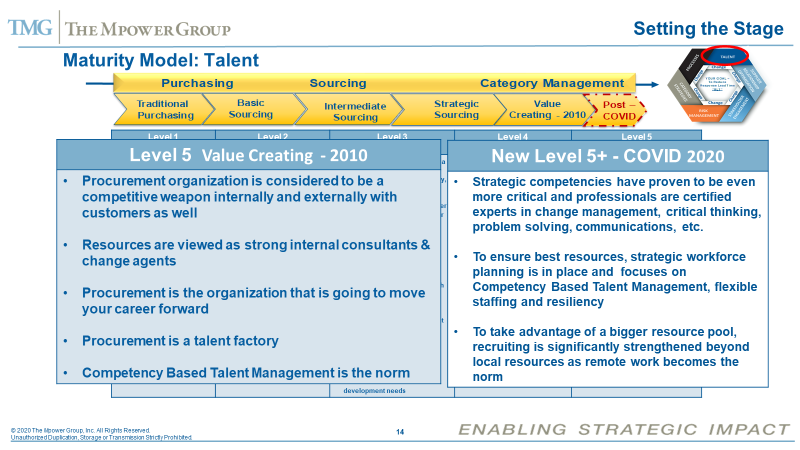At the recent Procurement Executive Round Table (PERT) workshop, we tackled the topic of defining Response Lead Time (RLT) and you may remember that we started the work of defining that as a metric. A quick reminder – just like you are ensuring that your supply chain/suppliers are resilient and can withstand another COVID (and that is Predictable and Inevitable!!!) – your customers are using your RLT to evaluate you as a supplier. While the work on what the metric will look like continues, we have been able to identify the elements that you need to change to impact your RLT. The discussion at PERT moved right into those elements and there was general concurrence on them.
While none of these will be a surprise, it is still useful to acknowledge the alignment that exists around them. Not only was there concurrence at PERT, the research leading up to the event indicates concurrence amongst many other out there:

This is an important point to consider because unless you are convinced that these are the right elements, it is easy to ignore them. The challenge in most cases is identifying what needs to change and then making the change happen which requires alignment. What you need to do is to assess where you are in each of these elements and then put a roadmap in place to improve each of them.
Of course, defining the metric would also help in validating your roadmap but that doesn’t mean you have to wait. RLT will probably take a while to be defined in some standard way and gain acceptance and you cannot afford to wait. Here are some initial thoughts that we have gathered around the composition of the metric and we welcome your input and thoughts.

In the meantime, let me pick up on the message on the slide above: COVID – 19 was Predictable & Inevitable – Need Permanent Organizational Competency . The need for Organizational Competency specifically targeted at improving your RLT is something that probably must be “sold” internally to your Stakeholders. While current conditions should make that relatively easier, being able to articulate the elements that need to be changed and a detailed roadmap to secure the appropriate funding and support will be critical. The good news is that increasing your Organizational Competency relative to RLT will also increase your overall competency significantly so think of this as a way to get incremental funding for your organization 😊.
As I mentioned above, you also need a way to assess where you are and identify the gaps so that you can develop a detailed roadmap. The good news for us is that all six of these elements are also part of our overall Maturity Model and we recently updated it to reflect the impact of COVID. You can see how that is reflected for Talent below. In our discussion at PERT, it was easily concluded that the right way to utilize this Maturity Model is to assess yourself against the combination of the attributes for Level 5 AND the COVID additions. That makes a lot of sense because it allows for a more fulsome assessment.

The message from the participants at PERT was quite clear and conclusive. We cannot afford to wait for a standard metric for RLT to be agreed to. We can and must immediately start working on developing and improving our Organizational Competency to improve our RLT.


